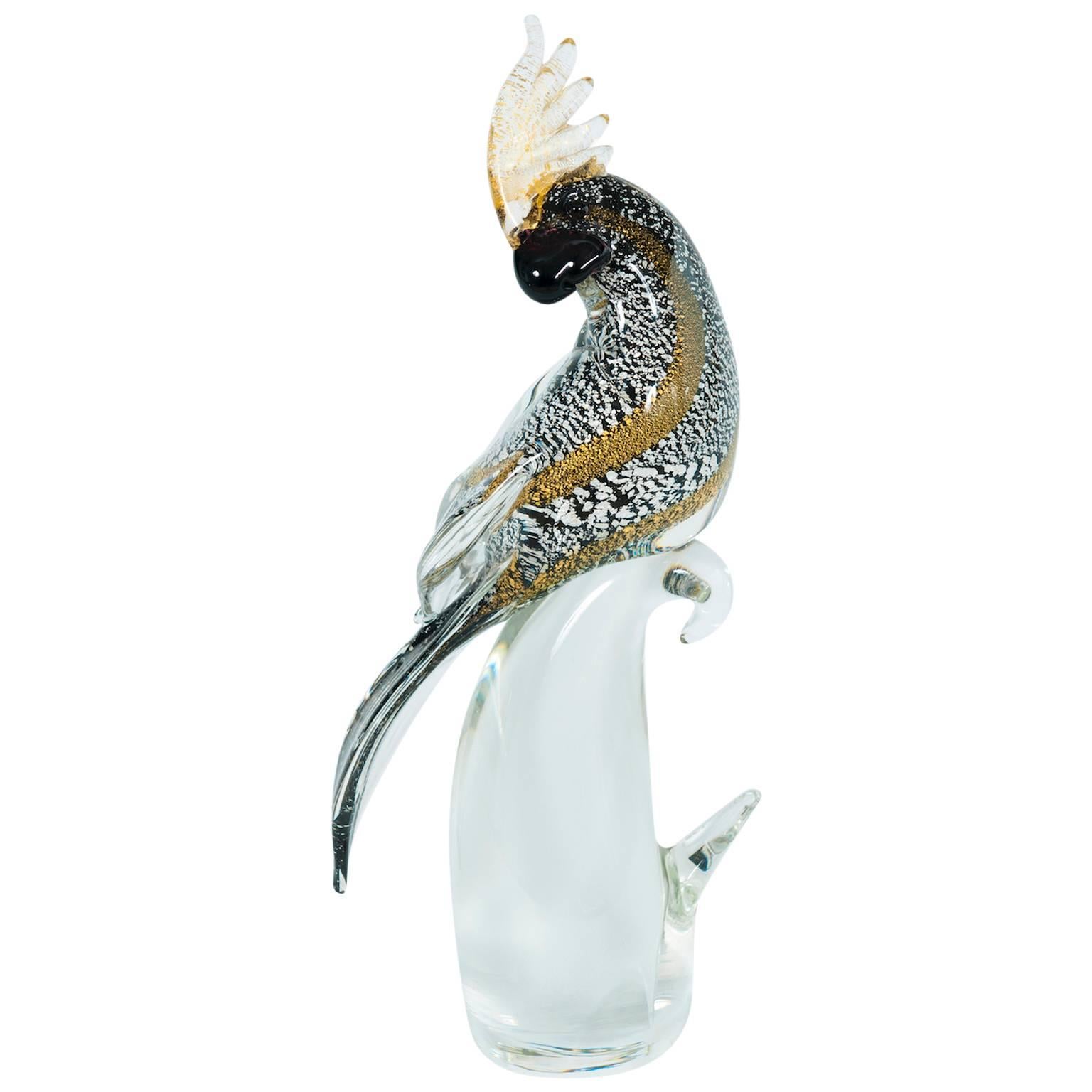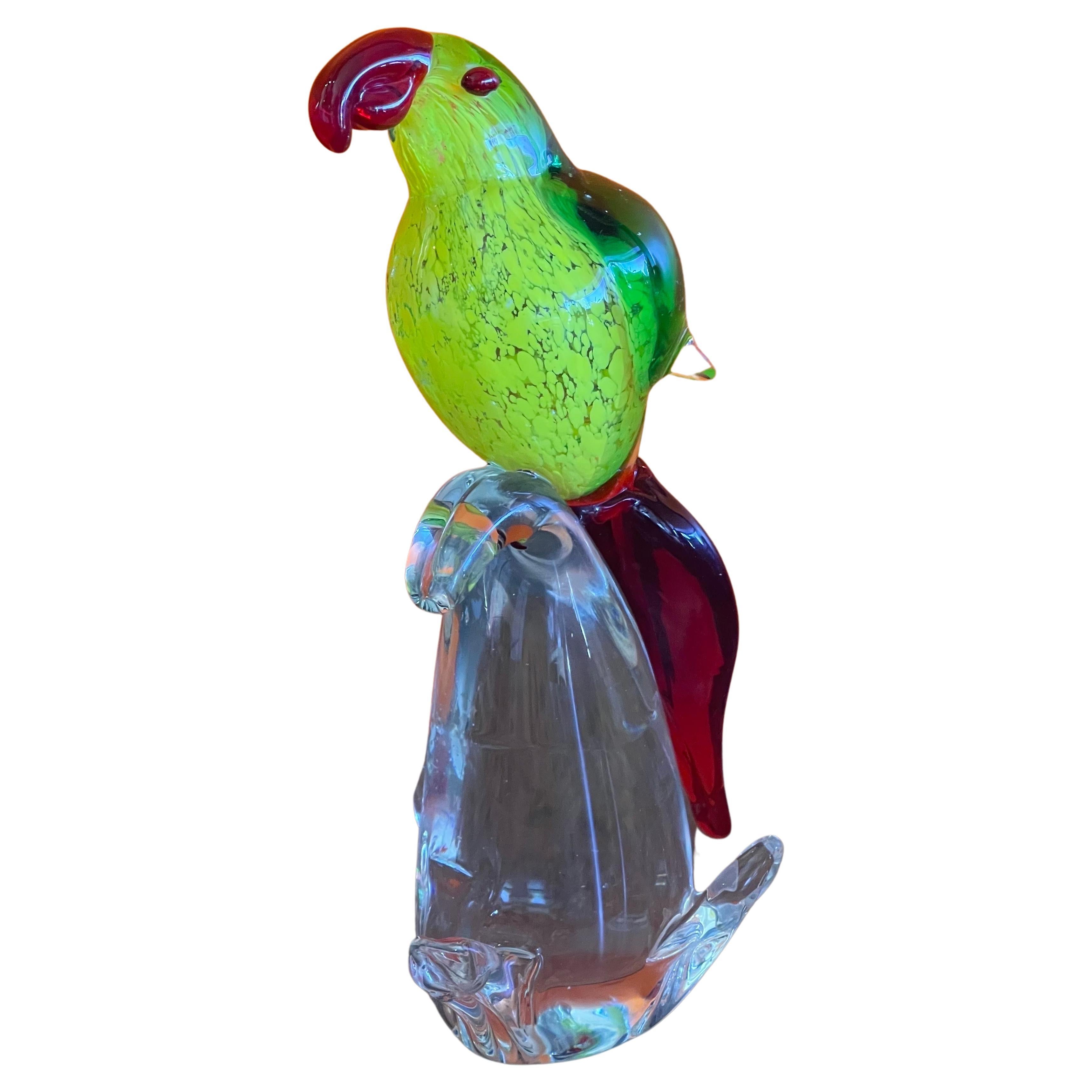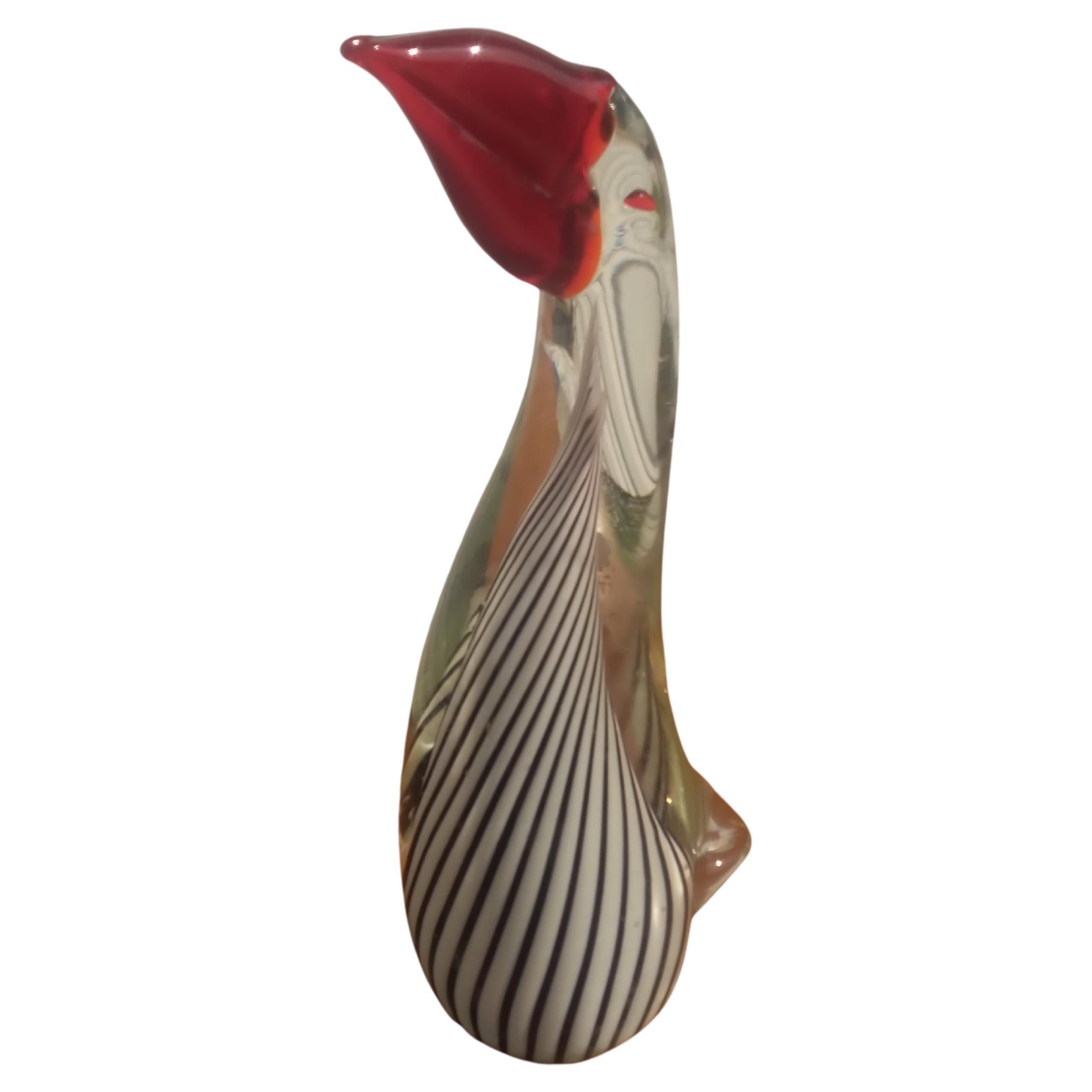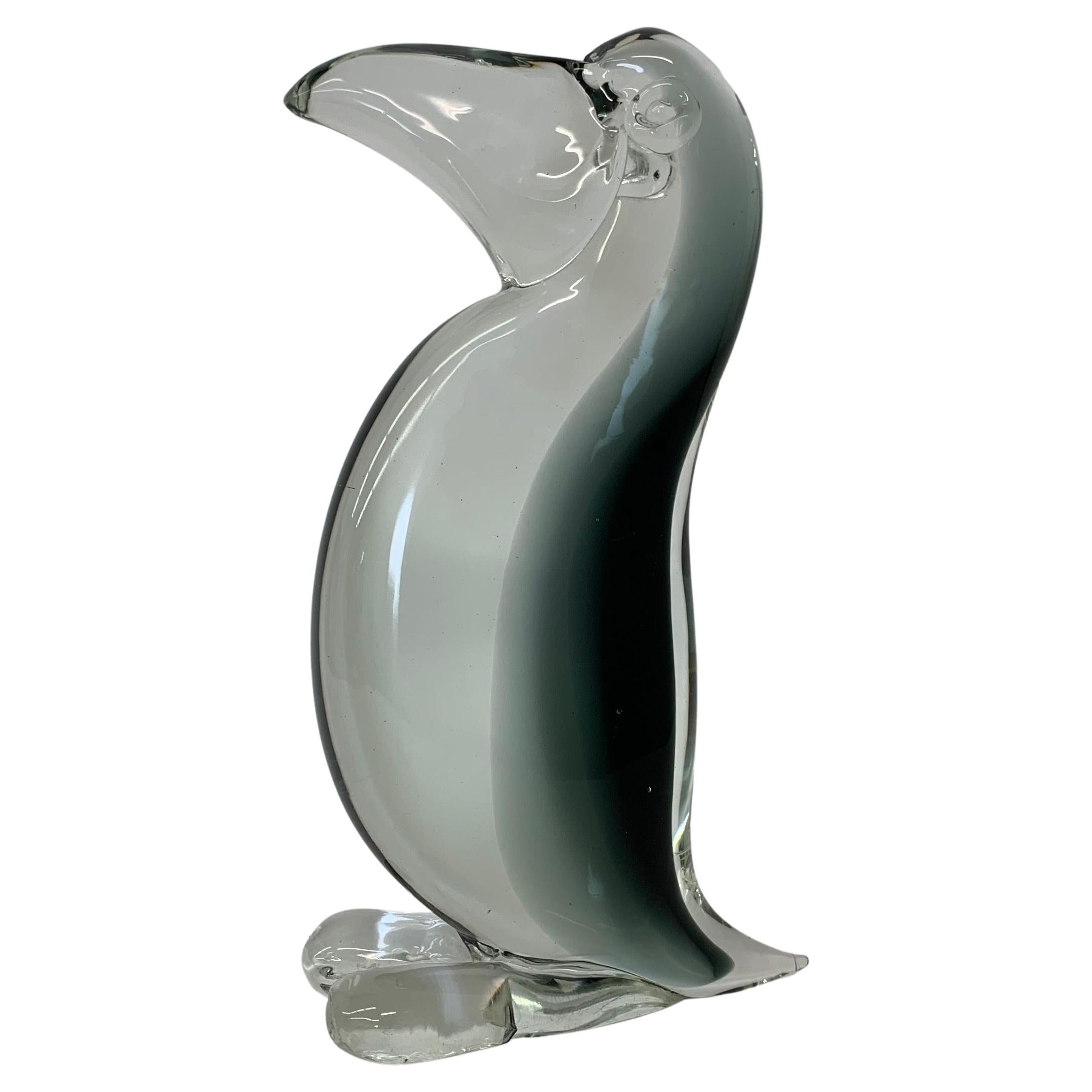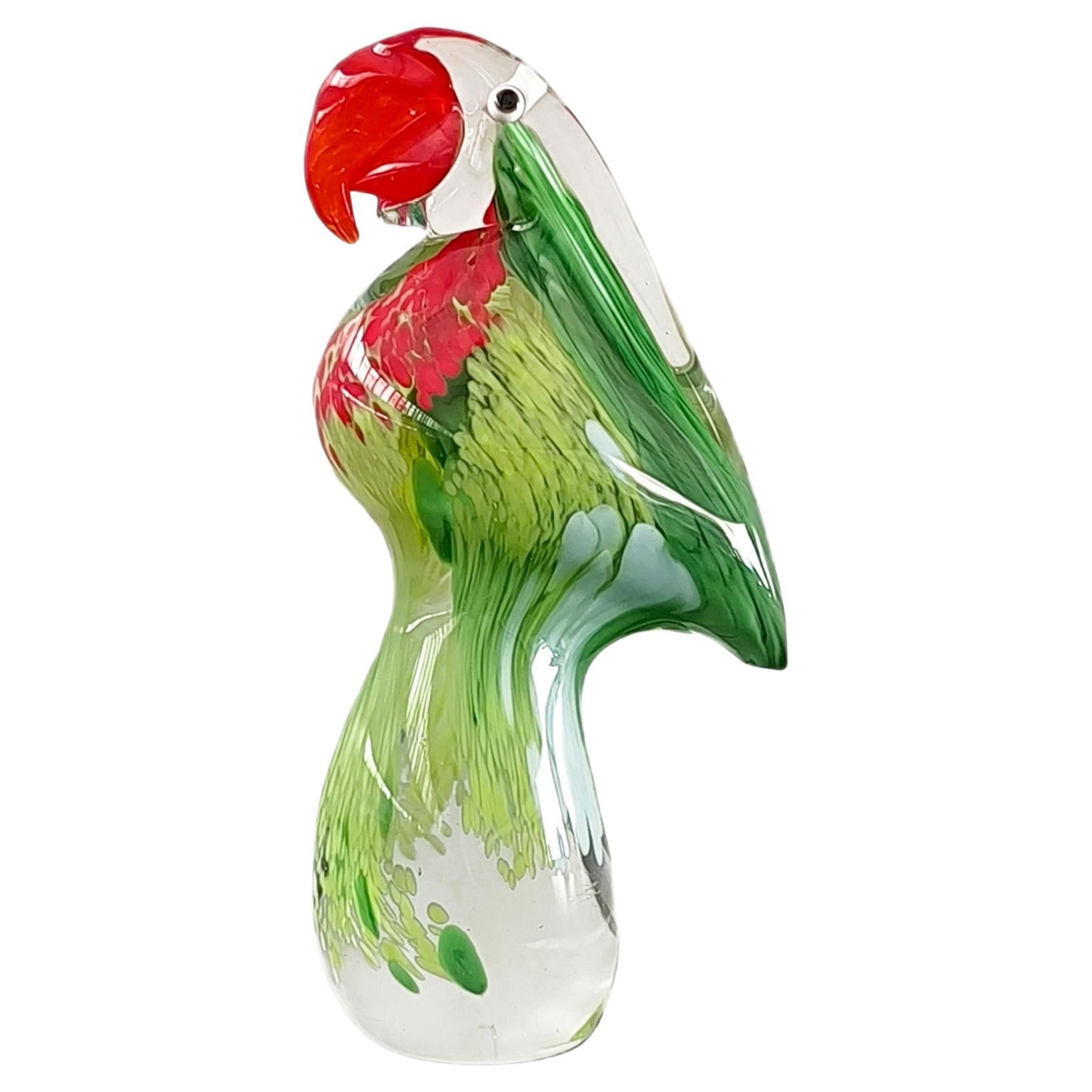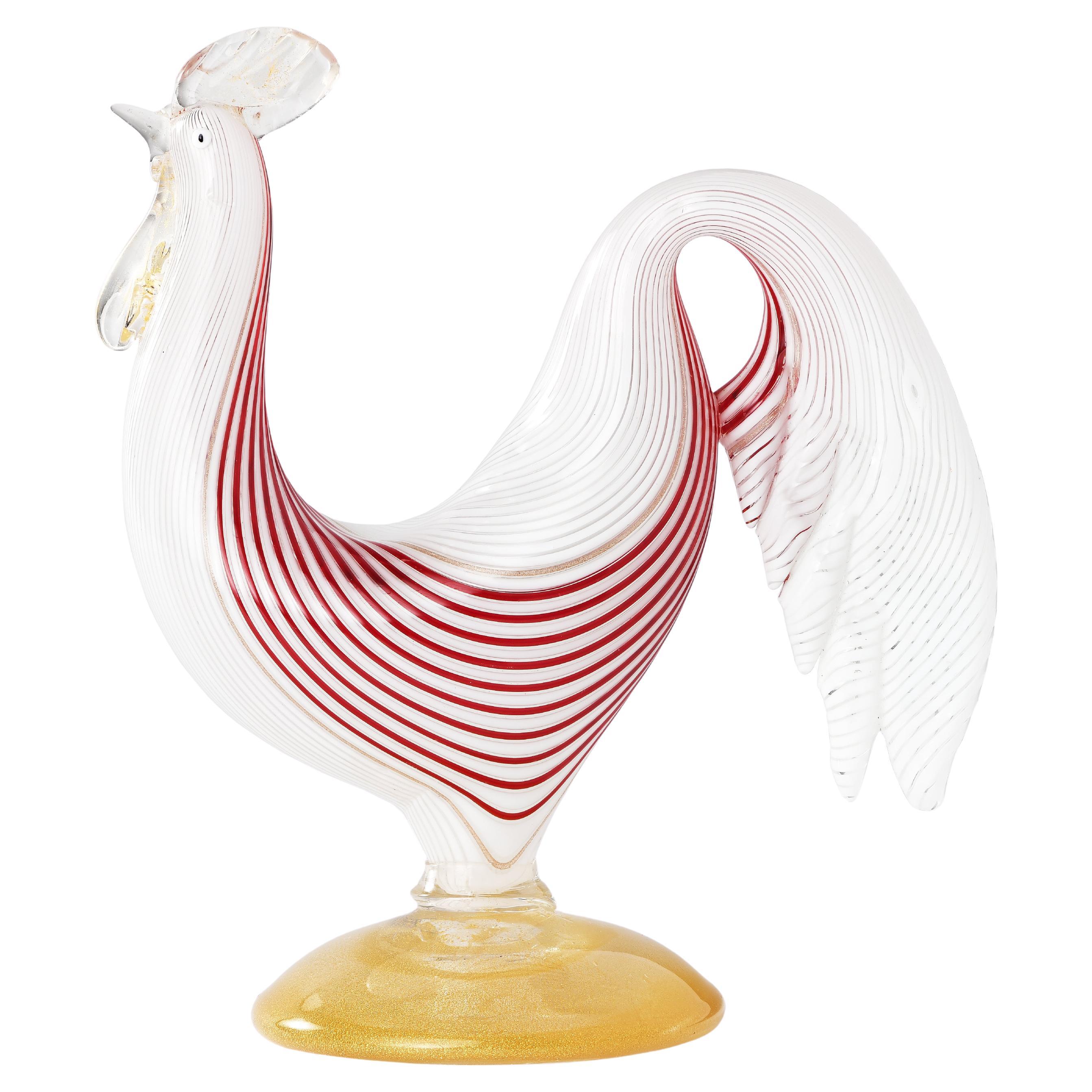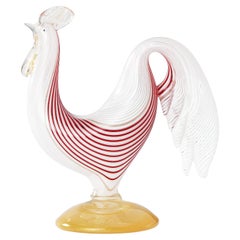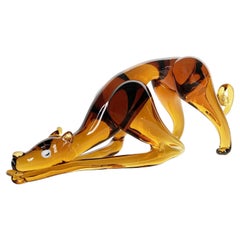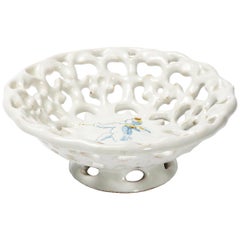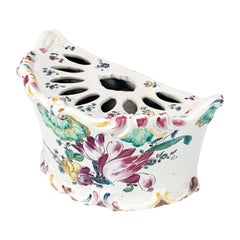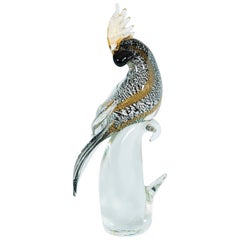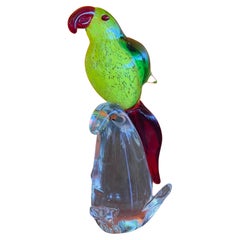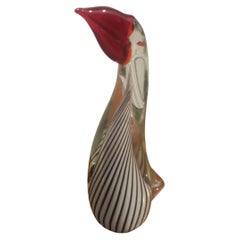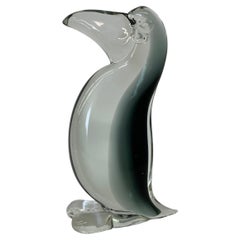Items Similar to Glass Parrot-Shaped Sculpture, Dino Martens, Venice, Aureliano Toso, 1953-1956
Video Loading
Want more images or videos?
Request additional images or videos from the seller
1 of 21
Glass Parrot-Shaped Sculpture, Dino Martens, Venice, Aureliano Toso, 1953-1956
$5,404.44
£3,980.36
€4,500
CA$7,352.32
A$8,170.05
CHF 4,281.19
MX$100,191.04
NOK 54,604.09
SEK 51,369.52
DKK 34,257.81
Shipping
Retrieving quote...The 1stDibs Promise:
Authenticity Guarantee,
Money-Back Guarantee,
24-Hour Cancellation
About the Item
Parrot-shaped sculpture Psitaccus
Dino Martens (1894 - 1970)
Vetreria Artistica Rag. Aureliano Toso, 1953-1956
It measures 9.055 inches in height x 4.13 in x 5.90 in (23 cm, 10.5 cm x 15 cm)
It weighs 1.997 lb (906 g)
State of conservation: intact.
The small glass sculpture depicts a parrot perched on a branch, with its crest up and facing forward. The object is made with a particular reed-blowing technique, using black, gold and “lattimo” glass with Phoenician-style decorations and details in yellow glass paste. Defined as “Parrot Psitaccus” in inventories, it was produced according to a design by Dino Martens at the Vetreria Aureliano Toso between 1953 and 1956.
The production of parrots is documented in the archive of the Aureliano Toso manufacture between 1953 and 1956, along with a centerpiece bowl of similar style. In fact, the documentation mentions: “Filigrana semplice a trina (Zigzag) - parrot on branch” (M. Heiremans, Vetreria Aureliano Toso, Murano 1938-1968, Berlino, 2016, disegno p. 172 model 5145, p. 332 model 1953), and “Filigrana semplice bianca nera Zigzag-bowl with two parrots” (M. Heiremans, p. 228 model 6487 and p. 333 model 1956).
Another precise comparison with this model comes from a similar sculpture exhibited in a recent exhibition, with an evocative title L’Arca di vetro. La collezione di animali di Pierre Rosenberg (The Glass Arc. The Collection of Animals by Pierre Rosenberg). This exhibition traced the history of twentieth century Murano glass, reinterpreted through a vast assortment and original creations of animal shapes. In this review, a parrot that is similar to ours is associated with the 1953 production (Cristina Beltrami, Giordana Naccari (a cura di), L’arca di vetro, La collezione di animali di Pierre Rosenberg, Skira, 2021, p. 160).
The history of Murano glass is varied and complex. Since the 1920s, the Murano tradition has evolved from the production of everyday objects to decorative ones: some glassmakers try their hand at creating human figures, sculptures, and zoomorphic elements in miniature.
The technique is refined and leads the artisans to devise new methods that allow the creation of both blown and massive figures.
A tradition of “Bagatelle” is known as early as the 16th century and throughout the 17th century and some objects come down to us from the wunderkammer as examples "alla maniera di Venezia (in the Venetian style)". Some rare examples are preserved in museums. Among these, the plastic decorations of the chandeliers and others molded lanterns stand out.
However, only in the twentieth century did a real turning point in technique and design come about: a production that recently found its enhancement with the rediscovery of the sculptural works produced by the main historic Murano glassworks, from Ercole Barovier to Martinuzzi and Zecchin, as well as Flavio Poli and Dino Martens, in a succession of increasingly complex creations.
Between 1930 and 1960 the production of “bestiary” glass evolved and moved from the simpler forms of the Thirties to more complex works in terms of morphology and technique. All this is evident in the Forties with Barovier, and in the Fifties with Bianconi, who, along with Dino Martens, carried out research into designs using “filigrana” and polychromy, without neglecting the research into opacity by Archimede Seguso. The glass animal thus becomes and remains an obligatory passage in Murano artistic production, a work of experimentation and formal research, inspired both by reality and the inventiveness of its creation.
The work of Dino Martens (1894 - 1970) fits into this context, considered by many to be an artist with a gift for glass work. After the early postwar period, he trained at the Accademia di belle arti di Venezia and initially dedicated himself to painting. After his initial experiences with glass with SALIR and with Salviati & C., he arrived in 1939 at the manufacture of the ragionier Aureliano Toso. It was here that he would become artistic director until 1963, experimenting with the material to create completely new color and formal effects.
Bibliography:
Cristina Beltrami, Giordana Naccari (a cura di), L’arca di vetro, La collezione di animali di Pierre Rosenberg, Skira, 2021, p. 160;
Marc Heiremans, Vetreria Aureliano Toso, 1938-1968, Arnoldsche Art Publishers.
- Creator:Dino Martens (Designer)
- Dimensions:Height: 9.06 in (23 cm)Width: 4.14 in (10.5 cm)Depth: 5.91 in (15 cm)
- Style:Modern (Of the Period)
- Materials and Techniques:
- Place of Origin:
- Period:
- Date of Manufacture:circa 1953-1956
- Condition:Intact.
- Seller Location:Milano, IT
- Reference Number:1stDibs: LU4352230607802
About the Seller
4.3
Vetted Professional Seller
Every seller passes strict standards for authenticity and reliability
Established in 1860
1stDibs seller since 2018
21 sales on 1stDibs
Associations
International Confederation of Art and Antique Dealers' Associations
- ShippingRetrieving quote...Shipping from: Milano, Italy
- Return Policy
Authenticity Guarantee
In the unlikely event there’s an issue with an item’s authenticity, contact us within 1 year for a full refund. DetailsMoney-Back Guarantee
If your item is not as described, is damaged in transit, or does not arrive, contact us within 7 days for a full refund. Details24-Hour Cancellation
You have a 24-hour grace period in which to reconsider your purchase, with no questions asked.Vetted Professional Sellers
Our world-class sellers must adhere to strict standards for service and quality, maintaining the integrity of our listings.Price-Match Guarantee
If you find that a seller listed the same item for a lower price elsewhere, we’ll match it.Trusted Global Delivery
Our best-in-class carrier network provides specialized shipping options worldwide, including custom delivery.More From This Seller
View AllMurano Glass Rooster-Shaped Sculpture, Dino Martens, Venice Aureliano Toso, 1954
By Dino Martens
Located in Milano, IT
Rooster- shaped sculpture Galletto
Dino Martens (1894 - 1970)
Vetreria Artistica Rag. Aureliano Toso, 1954
It measures 9.25 inches in height x 8.18 in x 4.4 in (23.5 cm x 20.8 cm x 11.4 cm)
It weighs 2.57 lb (1.169 g)
State of conservation: intact.
The small glass sculpture...
Category
Vintage 1950s Italian Modern Animal Sculptures
Materials
Glass
Greyhound - Shaped Glass Sculpture, Flavio Poli, I.V.A.M. Murano, Circa 1930
By Flavio Poli
Located in Milano, IT
Greyhound - shaped glass sculpture
Flavio Poli
I.V.A.M. Murano, circa 1930
It measures 4.72 in in height x 12.59 x 3.74 (12 cm x 32 x 9.5)
It weighs 2.42 lb (1.1 kg)
State of conse...
Category
21st Century and Contemporary Italian Modern Animal Sculptures
Materials
Murano Glass
Ancient Italian Renaissance Maiolica Crespina, Faenza, 1580 Circa
Located in Milano, IT
Crespina
Faenza, last quarter of the 16th century
Maiolica painted in two colors, light blue and yellow, on a thick, rich layer of white enamel.
It measures 2.24 in (5.7 cm) in height, 6.10 in (15.5 cm) in diameter.
lb 0.55 (kg 0.25)
State of conservation: mimetic restoration.
The small cup has a raised central “umbone”, a perforated brim and a shaped rim. It rests on a high jutting foot. The "crespina" shape, in some inventories is cited as "tacce de frute" (fruit cups). It was particularly appreciated in the Renaissance and has variants based on the formal types and the different sizes. The decoration, made according to the dictates of the “compendiario” style, used few standardized colors: blue and yellow on a thick white and shiny enamel, deliberately chosen as the colour which was most reminiscent of silver. This choice derived from a trend in creative design of the era: the shapes used in the molds were often taken from metal objects. An idea which would last throughout the Renaissance.
The work shows, in the middle of the “umbone”, a winged putto stepping forward while playing a long thin trumpet.
The depiction of the putto is fully representative of the repertoire of the Faenza workshops of the sixteenth century.
Some specimens with this type of decoration have been published in a volume by Carmen Ravanelli Guidotti: there appears the whole productive repertoire of this fundamental moment of transition between the taste for the “istoriato” style and the great simplification of decoration in the “compendiario” period. This style, in its simplicity, however, saw its expression in a rather varied collection of decorative subjects, including old-fashioned busts...
Category
Antique 16th Century Italian Renaissance Ceramics
Materials
Maiolica
Ancient Maiolica Flower Pot Pasquale Rubati Factory, Milan Circa 1770
By Pasquale Rubati
Located in Milano, IT
Maiolica flower pot “a mezzaluna” decorated with tulip
Pasquale Rubati Factory
Milan, circa 1770.
Measures: 4.7 in x 4.7 in x 8.6 in
12 cm x 12...
Category
Antique 1770s Italian Rococo Ceramics
Materials
Maiolica
Renaissance Inkwell Calamelli workshop, Italy, Faenza, second half of the 16th
By Virgiliotto Calamelli
Located in Milano, IT
Inkwell
Calamelli workshop (attr.).
Faenza, second half of the 16th century
Height 4.33 in; length 8.07 in; depth 2.95 in (11 cm; 20.5 cm; 7.5 cm)
Weight: 0.800 lb (363 g)
State of conservation: some chipping to the top of the mask around the mouth. Handle glued, without any restorations; minor chips in some raised areas.
This object has the shape of a foot wearing Greek-style footwear, as can be seen in some raised areas. The foot is anatomically modeled with bare toes, while the ankle is partially covered by the footwear. On the heel, there is a small circular handle to support the object. The mouth of the container is shaped like a mask. The interior, completely enameled, suggests that the piece was intended to be used as an inkwell or to contain some other liquid. The base, however, is not enamelled.
The painted decoration, scant and brief, consists of rapid cobalt blue shading between the toes of the foot, with more precise emphasis on the nails. It is accompanied by yellow citrine accents to enhance the forms. The mask is painted with the tip of the brush, to accentuate the tense nature of the eyes and to accentuate their outline. Thin strokes of yellow-orange line the interior of the mouth.
Since the Renaissance, this decoration has been referred to as "compendiaria" and it characterizes the period of production extending from the mid-16th century to approximately the middle of the following century. It significantly influenced tastes at the time. It evolved from the polychrome style "istoriato" and transformed into a new style that "summarized" (compendia), or condensed, the ornamentation of the works into a few colors, placing greater prominence on the shapes. It was often inspired by metal specimens. Since the Renaissance, this decoration has been referred to as "compendiaria" and it characterizes the period of production extending from the mid-16th century to approximately the middle of the following century. It significantly influenced tastes at the time. It evolved from the polychrome style "istoriato" and transformed into a new style that "summarized" (compendia), or condensed, the ornamentation of the works into a few colors, placing greater prominence on the shapes. It was often inspired by metal specimens.
This artwork finds parallels in similar objects all characterized by this refined style and produced in the city of Faenza and other Italian centers starting from the mid-16th century.
The closest comparable example in majolica is a foot acquired by the British Museum in 2011 (inv. 2011, 8008.1). This was previously published by Carmen Ravanelli Guidotti in 1996 and later by Dora Thornton in 2016 during the conference on Renaissance ceramics...
Category
Antique 16th Century Italian Renaissance Inkwells
Materials
Maiolica
Ancient Italian Maiolica Faenza, Ferniani Factory, Circa 1700
By Ferniani Factory
Located in Milano, IT
Centerpiece white maiolica shell
Ferniani factory, early period: 1693-1776
Faenza, circa 1700
Measures: 5.6 in x 14.72 in x 13.46 in (14.3 cm x 37.4...
Category
Antique Early 1700s Italian Baroque Ceramics
Materials
Maiolica
You May Also Like
Italian Venetian Parrot Sculpture in Blown Murano Glass, by Alberto Donà, 1980s
By Alberto Donà
Located in Villaverla, IT
Unique Elegant Italian Venetian Sculpture Parrot in Murano glass, by Alberto Donà in 1980s, in very excellent original condition, composed ...
Category
Vintage 1980s Italian Animal Sculptures
Materials
Art Glass, Blown Glass, Murano Glass
Stylish Parrot Art Glass Sculpture by Murano Glass
By Murano 5
Located in San Diego, CA
Stylish parrot art glass sculpture by Murano Glass, circa 1960s. The piece is in very good vintage condition with no chips or cracks and measures 5"W x 5"D ...
Category
Mid-20th Century Italian Mid-Century Modern Animal Sculptures
Materials
Art Glass
$380 Sale Price
20% Off
San Pacific Handblown Glass Parrot
Located in Pasadena, TX
A vintage Murano style art glass by San Pacific. The figure depicted is a parrot that has an applied beak.
Very Good Vintage- Near Excellent
Category
Late 20th Century Unknown Modern Animal Sculptures
Materials
Glass
Mid-century murano glass bird, 1970’s
Located in Delft, NL
Mid-century murano glass bird, 1970’s
Category
Vintage 1970s Italian Mid-Century Modern Animal Sculptures
Materials
Glass
Murano Glass Parrot Sculpture, Paperweight
By Archimede Seguso
Located in Bochum, NRW
Beautiful Murano glass parrot sculpture, circa 1970s. The piece is in very good vintage condition with no chips or cracks. The bright red glass beak applied over a light and dark gre...
Category
Vintage 1970s Italian Mid-Century Modern Animal Sculptures
Materials
Glass, Murano Glass
$312 Sale Price
20% Off
Art Glass Bird / Duck Sculpture by Cenedese for Murano Glass
By Murano 5, Cenedese
Located in San Diego, CA
Large Murano glass bird / duck sculpture on base by Cenedese studio for Murano Glass, circa 1980s. This is a beautiful piece that is in very good vintage condition with no chips or s...
Category
Late 20th Century Italian Mid-Century Modern Animal Sculptures
Materials
Murano Glass
